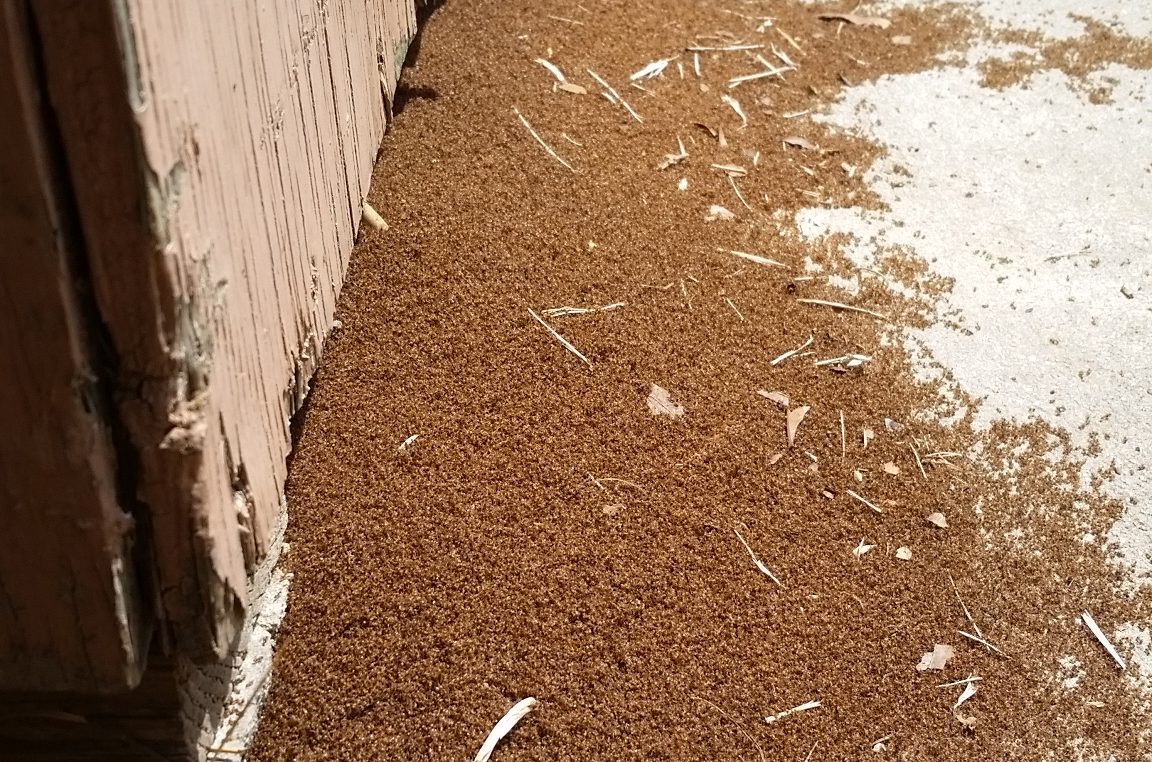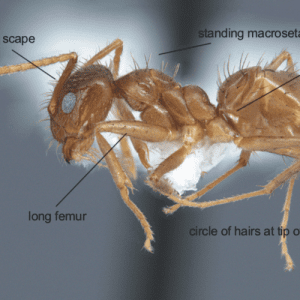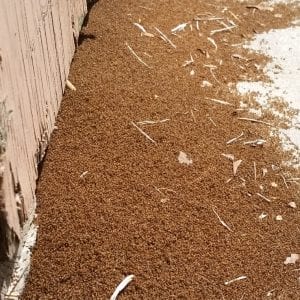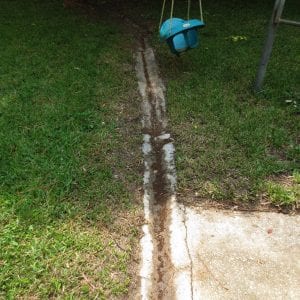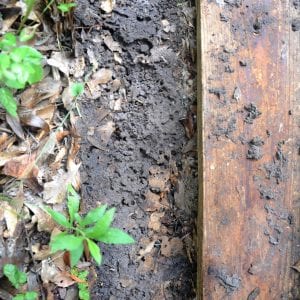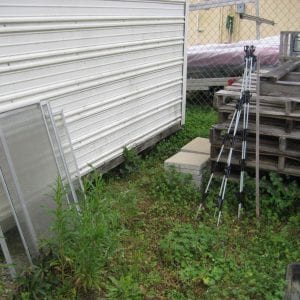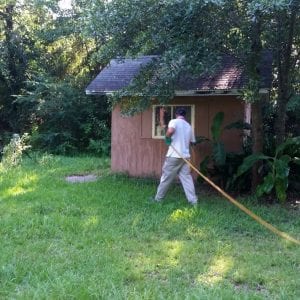Home

Tawny crazy ants are considered by many to be one of the worst nuisance ants. Learn how to identify and keep these pests from invading your home.
Tawny crazy ants (Nylanderia fulva), previously known as the Caribbean or Rasberry crazy ant, are fast becoming an economic, ecological, and nuisance pest in the southeastern United States. They have been a serious problem in parts of Florida and Texas for over 10 years and have begun spreading to other states.
In infested areas, extremely large populations of tawny crazy ants (TCAs) have caused great annoyance to residents and businesses. While this pest does not bite or sting, overwhelming populations of TCAs prevent residents from enjoying time in their yards. When populations reach a critical mass, they are extremely difficult to control, and management options are usually expensive. These reasons make reducing the spread of TCAs in the Southeast highly important.
Tawny Crazy Ant Movement
TCA expansion is either by slow, methodical crawling by worker ants or by jump movement to an uninfested location. TCAs may expand their local range by 800 to 1,300 feet per year by crawling. Jump movement occurs when a small group of ants is inadvertently moved by humans (in trash, mulch, potted plants, cars, etc.) to uninfested areas. It is characterized by the sudden presence of the ants in an area where they were formerly unknown.
When the ants arrive at their new home, they establish new nest sites as colonies grow and expand. Because colonies consist of multiple egg-laying queens, worker numbers may increase rapidly in the heat and humidity of summer. As colonies grow in size, they begin filling every potential nest site.
Identification
Trails of TCAs are fast moving, erratic, wide, and have vast numbers of ants. They do not form mounds in the landscape but can tunnel in loose soil. TCAs are uniformly sized, reddish-brown in color, and 1/8-inch long. Worker ants have long legs and antennae. Under a microscope, you will see a 12-segmented antenna, a petiole with one node, an acidopore, and a body covered with many hairs (figure 1).
A common and unique visual sign of TCAs is large numbers of dead ants found outdoors piled in corners of structures or along walls next to buildings (figure 2). If you suspect they are TCAs, it is important to confirm their identity. A sample of the ants, as well as photographic documentation, should be sent to a local county Extension agent. The agent will identify the ant or contact a specialist to confirm identification. Proper identification is necessary to develop a management plan.
- Figure 1. The tawny crazy ant (Nylanderia fulva) worker. Photo courtesy of Joe MacGown, Mississippi State University.
- Figure 2. Dead tawny crazy ants next to a building.
Biology and Behavior
Colonies have multiple queens that share reproduction responsibilities. This allows colonies to reach extremely large populations and occupy wide swaths of land. In areas where TCAs are well established, workers can number in the millions.
TCAs prefer foraging and nesting in shaded areas. Foraging trails are quite apparent (approximately 4 inches wide), and individuals forage erratically. Foraging trails often are found going up and down trees and fences, following seams in concrete surfaces, following structural barriers, and moving in large, open, shady, grassy areas (figure 3). Colonies nest in, on, and under anything that can provide moisture and protection from rainfall. They are found in mulch and leaf litter; under pots, natural debris, landscape objects, and loose tree bark; and in signs and structures (figure 4). Nests occur primarily outdoors, but worker ants will forage indoors.
- Figure 3. Dead tawny crazy ants along a foraging trail.
- Figure 4. A tawny crazy ant nest under a board.
TCAs eat almost any organic material. Worker ants commonly tend toward insects such as aphids, scale insects, whiteflies, mealybugs, and others that excrete a sugary liquid called honeydew when stimulated by the ants. They consume other insects and small vertebrates for protein. Workers also are attracted to sweet parts of plants such as nectarines or damaged and over-ripe fruit.
Management for Homeowners
If you are in an area where TCAs are found, it is critical that material moved from one location to another is inspected. Before bringing any material home (mulch, straw, turf, potted plants, etc.), make sure that all items are ant-free. If you are in an area infested with TCAs, it is equally important that you monitor your property for ants.
Good integrated pest management principles are required to obtain population reduction. Effective TCA management requires an approach that involves landscape modification, elimination of food sources, landscape treatment, and, if necessary, barrier treatment for structures. As much as is economically and practically feasible, you should remove all natural and manmade litter, debris, trash, and outdoor clutter (figure 5).
Habitat modification allows any needed chemical treatments to perform better (figure 6). In some cases, managing honeydew-producing insects, such as aphids, reduces the availability of this food resource and thus helps to reduce TCA populations.
- Figure 5. The common denominator of TCA nest sites is an environment that can retain moisture for the nest and provide food resources.
- Figure 6. Habitat modification allows any needed chemical treatments to perform better.
When items are removed, it is vitally important to avoid the inadvertent spread of ants to uninfested sites. Before trash and other debris leaves the property, it should be thoroughly inspected to ensure that it is free of ants. You do not want to be the source of a new infestation.
In the event of a positive TCA infestation, a multifaceted approach must be taken. Chemical treatment alone often will result in failure. Large populations of TCAs are difficult to control, so in many cases suppression is the only option. Control becomes more realistic with new, smaller populations, thus it is imperative to regularly monitor for new infestations.
If a newly established TCA infestation is discovered prior to its period of rapid growth, bait treatments can be very helpful in providing control. TCAs tend to switch bait preferences, so a sweet bait that works today might not work tomorrow. The best time to use baits is in early spring when populations are low. Interior baiting should be avoided as it may attract foragers into structures.
Long-term relief from the use of chemically based pest control is unlikely. Perimeter treatments are typically made with liquid spray products, and yard treatments are usually delivered as granular formulations.
A comprehensive integrated pest management plan will be required if an infestation occurs. Relying on a single control tactic for this ant will result in failure. Control of TCA is similar to control of the Argentine ant, but the best management technique is to prevent TCA from entering your property. In cases of a large infestation, the services of a pest management professional may be required. Check with your county Extension agent, state department of agriculture, or distributor for recommendations and additional information on TCA control.
Report findings. If you think that you have a TCA infestation, contact your county Extension agent to get a proper identification. This also will allow us to track the movement of this invasive species.
This publication is a product of the Alabama Cooperative Extension System and the Southern IPM Center in cooperation with:

Fudd Graham, Research Fellow IV, Kelly Palmer, Regional Extension Agent, and Jeremy Pickens, Extension Specialist, Assistant Research Professor, all with Auburn University.
Reviewed January 2022, Managing Tawny Crazy Ants Around Homes, ANR-2547

